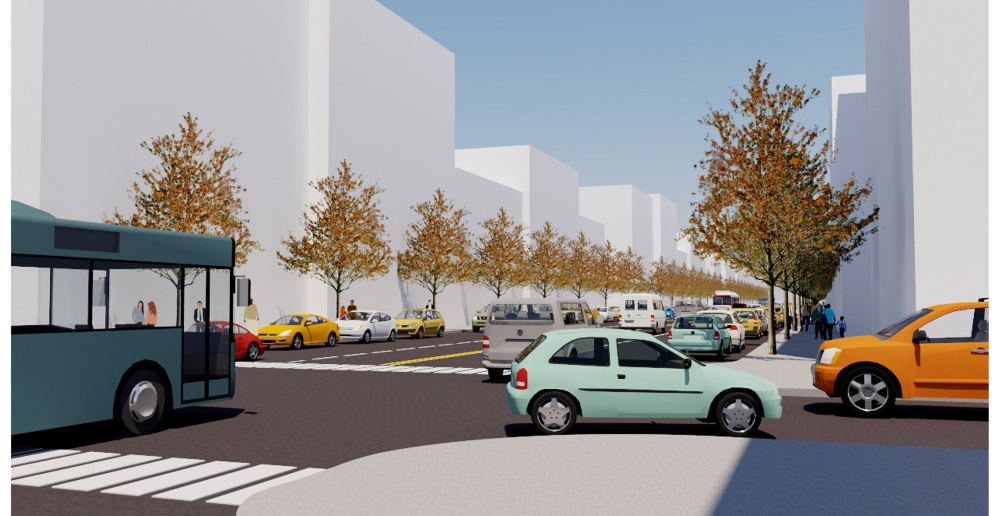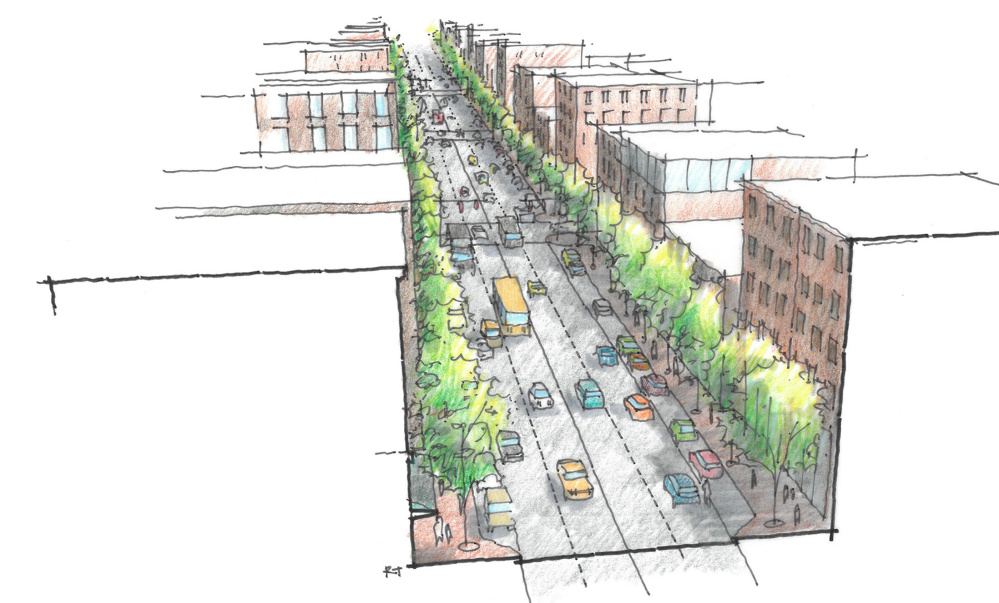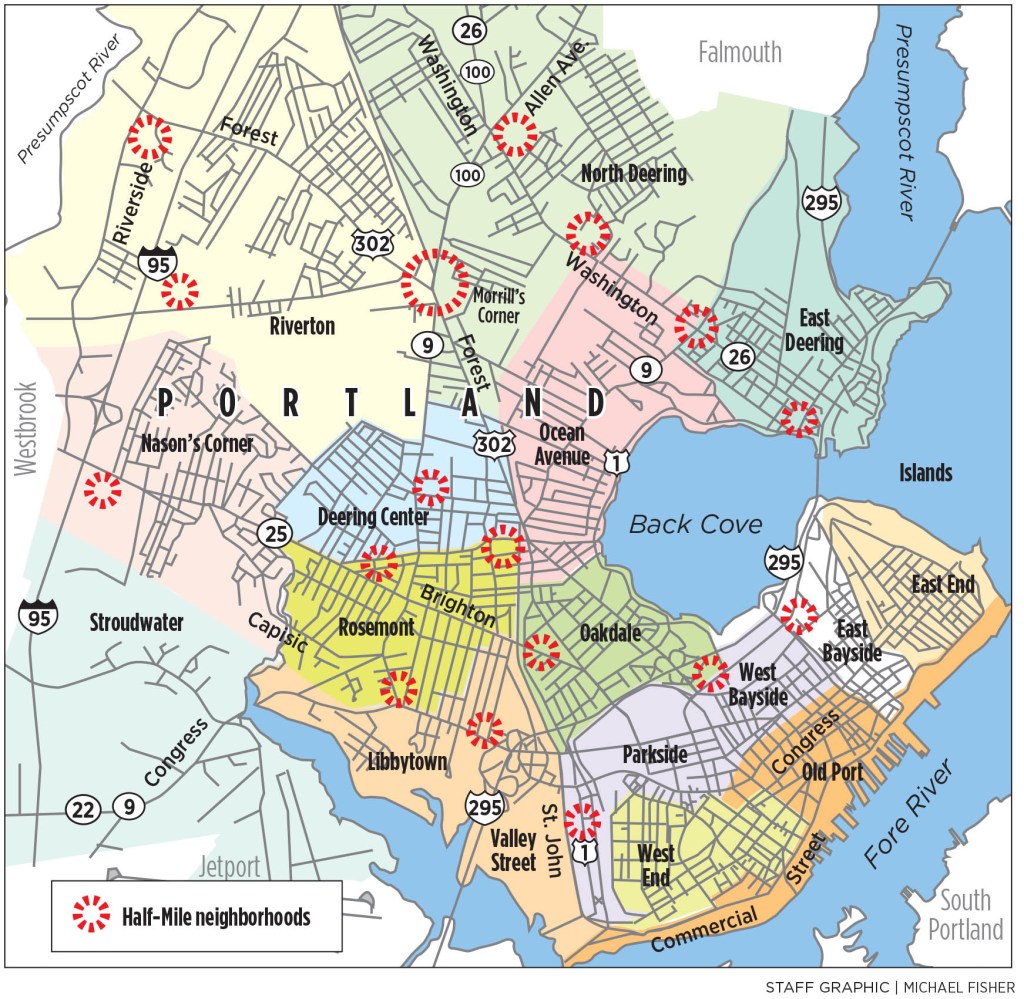Portland will grow in the coming years as more people flock to cities, driven by well-established and worldwide trends. Cities today attract the young, the empty-nesters and the globally displaced, plus service- and knowledge-based businesses. The northward spread of economic activity from Boston and the warming effects of climate change will bring even more.
The question is not whether Portland will grow, but how well it will manage the growth that is now certain to come. Will this growth be haphazard, driven solely by market forces and the desire for profit? Or will it be intentional as well, responsive to longstanding traditions and public values, and lead to a more attractive and successful city? Will Portland become a city of the rich and poor, squeezing the middle class out to the suburbs and making itself auto-dominated? Or will it return to its roots as a livable, walkable city of connected neighborhoods, each with its own distinctive character?
A more populous and attractive city for its residents to live and for businesses to locate will go a long way in helping the city deal with its aging infrastructure. Its current Capital Improvement Plan estimates the replacement value of the city’s capital assets at some $830 million. If these were scheduled for replacement over a reasonable 45 to 50 year period, it would require roughly 50 percent more in annual borrowing than is proposed in the plan – and burdensome property tax increases for all.
Over the past six months Creative Portland, the Portland Regional Chamber, the Muskie School and the Portland Society for Architecture have examined these issues and conclude that the city faces not one but two great challenges today: workforce development and housing, which are two sides of the same coin.
To be successful, Portland must grow its workforce, broaden its property tax base and create greater housing opportunities for all social classes along its connecting thoroughfares and in select neighborhood centers on and off the peninsula.
Portland must pay careful attention throughout to good urban design, learning from other successful cities.
Successful cities today are powerful magnets for people, offering vast opportunity for employment and upward mobility. They accommodate diverse peoples of all incomes and social classes and ensure the availability of shelter that is affordable to all. To do this, they build mixed-use and mixed-income neighborhoods that bring together housing, businesses, shops, cultural venues, green space and pocket parks, creating settings where residents can walk to shop, work, play, rest, engage and visit.
Portland’s employers face formidable challenges in replacing the highly skilled workers who will retire over the next few years. This “changing of the guard” will be successful only if Portland can attract and keep the next-generation workforce. Housing prices and rents that are out of reach will drive more workers from the city, worsen traffic congestion, make commuting even more stressful and dangerous, further burden resident taxpayers and persuade employers to locate in places where employees can afford to live.
To address its workforce problem, the city must attract and train workers at all skill levels. Unprecedented collaboration will be required among our secondary schools, colleges, students and employers to ensure a continuing supply of high-skill and high-wage professionals, and to prepare residents for more limited-skill and limited-wage jobs that offer employment entryways for thousands of individuals.
Over the past decade, commuters rather than residents have been the overwhelming beneficiaries of Portland’s job growth. Right now, just 25 percent of Portland’s workforce lives within the city. Each workday, more than 50,000 workers enter and depart the city, turning important parts of the city into transport sluiceways rather than vibrant neighborhoods.
Over the next decade, Portland can and should aim to have half its population live and work in the city. In 1950, Portland was home to 77,000 people; today the city population is 66,000. How could Portland best become a city of 77,000 again – or even 100,000? It would take a new way of thinking about the city’s development.
Why not move forward with the approved plan to reconfigure Franklin Street as a tree-lined boulevard with wide sidewalks for pedestrians and five- or six-story commercial and residential buildings? With Maine Medical Center’s recent expansion announcement, why not refurbish the St. John/Valley Street area as an attractive neighborhood for its current residents, businesses, new hospital employees and light industry?
The Rocky Hill section behind Morrell’s Corner offers yet another exciting possibility for a neighborhood where as many as 5,000 people might live, work and shop without getting into a car and could be connected to the peninsula by improved public transit.
Interstate 295 between Congress Street and Washington Avenue has created a massive physical and psychological barrier that will require imaginative redesign to restore the East Deering neighborhood and reconnect the peninsula to Forest Avenue, the public university and private businesses now compromised by the massive highway.
Why not aspire to remove I-295 between Congress and Tukey’s Bridge altogether, direct through-traffic to the Maine Turnpike’s Falmouth Connector and make the new Congress-to-Washington corridor into a grand boulevard for housing, commerce and green space?
A Maine Department of Transportation traffic analysis for the redesigned Franklin Street indicates that bringing contemporary engineering design standards to these several projects would improve both traffic flow and public safety.
In Boston, the Rose Kennedy Greenway along the site of the late Central Artery has transformed the city’s relationship to the North End and a cleaned-up Boston Harbor. In Dallas, which now boasts a small streetcar system downtown, a movement is afoot to tear down Interstate 345 and replace it with a mixed-use boulevard.
How wonderful a gift to Portland might it be to repair the pain once inflicted upon it along Franklin Street, Spring Street and I-295 by recreating each of these as a lively and pleasurable scene of housing, commerce and personal pleasure?
Portland today teems with possibilities. With imagination and projects shovel-ready for forthcoming federal infrastructure funds, we can make this city even more attractive to new residents, especially those needed to replace retiring workers; to new businesses that will come where talent resides; and to current and future residents who will enjoy a livable city of vibrant, connected neighborhoods.
Portland has been a city of challenge and change from its very beginnings at the foot of India Street nearly 400 years ago. Throughout, its residents have shown resilience and pragmatism in responding. It is time now for us to act, to envision and build a Portland for the coming century that will highlight new and exciting (if familiar) architectural forms, and to advance its acknowledged resiliency and quality of place.
Send questions/comments to the editors.




